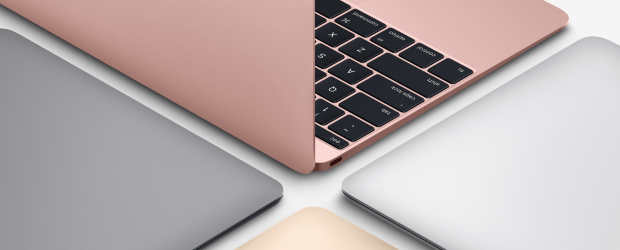If anyone was worried about Apple Inc. losing ground to its competition in the tech market, they need not fret any longer.
The company recorded several all-time records in its fiscal 2017 first quarter ending on Dec. 31, 2016, including $78.4 billion USD in quarterly revenue, easily surpassing the $75.9 billion USD earned in the year-ago quarter.
In particular, Apple set revenue records for its offered services, such as the App Store, Apple Music and Apple Pay, as well as for its flagship products, Mac, iPhone, and Apple Watch.
CEO Tim Cook said that it was the “best quarter ever” for services, which generated almost $7.2 billion USD in revenue, an increase of 18 per cent year over year, and that it would continue to be a strong focus for the company moving forward.
“Services are becoming a larger part of our business and we expect revenues to be the size of a Fortune 100 company this year,” he explained during an investors call. “Our services offerings are now driving over 150 million paid customer subscriptions, which includes our own services and the third party content that we offer on our stores. We feel great about this momentum and our goal is to double the size of our services business in the next four years.”
Apple’s App Store broke all-time records during the holiday quarter, including 3 billion in purchases in December alone, making it the AppStore’s single best month ever. In the first 13 weeks of the quarter, the AppStore recorded a 43% increase in year over year revenue.
“App Store revenue continues to outpace the industry overall, more than double the revenue of GooglePlay in calendar year 2016,” explained Luca Maestri, senior vice president and chief financial officer (CFO) at Apple.
Revenue from Apple Music also grew for the third quarter in a row, and the company’s Apple Pay also saw its momentum continue. The number of Apple Pay users tripled in 2016, Cook said, and transaction volume increased by 500 per cent year-over-year as the system expanded into four new countries: Japan, Russia, New Zealand and Spain.
Apple’s foray into the enterprise
Apple has mpved into the enterprise sector in recent years, and its journey is off to a good start. During the company’s investor call, Cook raved about the progress it was making alongside major partners such as Cisco Systems Inc., and IBM Corporation.
“The combination of our iOS and Cisco’s technology is giving companies everywhere the opportunity to vastly improve user experience for mobile employees,” he said. “With enhanced networking performance, up to eight times faster roaming, better reliability for apps and native voice experience, we’re excited about how much more productive the workforce will be with these great capabilities. In fact, the total number of joint customer opportunities has grown over 70 per cent since last quarter.”
And the company’s partnership with IBM has also been successful in allowing enterprise to create and deploy “multiple iOS apps with speed and efficiency.”
Apple products
In terms of products, Apple’s Macintosh computers not only returned to growth after several quarters of weak sales, but actually generated its highest quarterly revenue ever, mainly due to the launch of new Macbook Pro models released in October 2016. In the quarter, 5.4 million Macs were sold and Apple saw double-digit unit growth in countries such as Japan, mainland China, India, the Netherlands, Sweden, as well as in US education market.
The Apple Watch also saw its best quarter ever, both in units and revenue. In fact, CEO Cook pointed out that demand was so strong for the Watch during the holiday season that the company couldn’t keep up with production.
iPhone sales also set a new record, selling 78.3 million units, an increase of five per cent over last year. This was driven mainly by the “amazing success” of the iPhone 7 and 7 Plus.
CFO Maestri mentioned that the US, Canada, Western Europe, Japan and Australia saw double-digit iPhone growth, while Brazil, Turkey, Central and Eastern Europe, and Vietnam saw even stronger growth.
Apple sold 13.1 million iPad units in the quarter, which surpassed expectations. Maestri noted that the iPad continued to attract a very high percentage of first time buyers and holds an 85 per cent share of the US tablet market for devices priced above $200 USD.
Apple Airpods also got off to a good start after being launched in December 2016.





